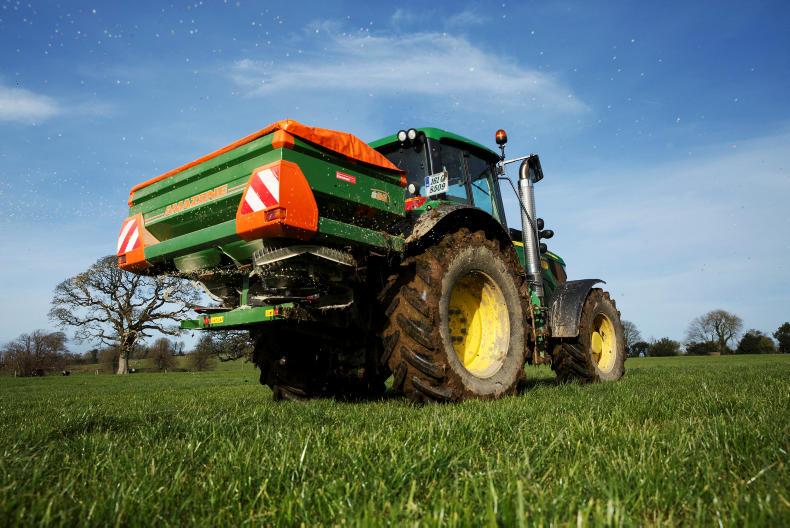“Substituting 50% of the CAN spread on farms with urea + NBPT is equivalent to the amount of methane produced by 106,000 dairy cows."
This was according to Dr Patrick Forrestal of Teagasc, Johnstown Castle, who presented results of recent trials carried out on protected urea compared with the traditional use of CAN and untreated urea fertiliser products.
Forrestal said the initial results from this research is positive news for the Irish agricultural industry and a switch over to its use could be a possible way to reduce emissions.
Forrestal said Ireland has significant emission reduction targets to meet in the near future.
“The Food Wise 2025 strategy foresees significant increases in agricultural production. However, on the other hand, the European Commission has set a 30% reduction in overall Irish emissions by 2030,” explained Forrestal.
He said as agriculture accounts for approximately 33% of greenhouse gas (GHG) emissions and 98% of ammonia emissions the pressure is mounting for agriculture to play a greater role in meeting these targets.
The positive results from the trial showed:
Protected urea is consistently as efficient as CAN with regard to nitrogen recovery and better than untreated urea (during summer). Protected urea has a much lower GHG emission loss than CAN.Protected urea and untreated urea has a similar yield performance to CAN throughout the year.In terms of ammonia loss, protected urea has been shown to cut losses by 79% on average compared with untreated urea. The results showed that ammonia loss from protected urea was not significantly different to CAN.The research was presented at the Teagasc agri-environmental conference in the Tullamore Court Hotel today.
“Substituting 50% of the CAN spread on farms with urea + NBPT is equivalent to the amount of methane produced by 106,000 dairy cows."
This was according to Dr Patrick Forrestal of Teagasc, Johnstown Castle, who presented results of recent trials carried out on protected urea compared with the traditional use of CAN and untreated urea fertiliser products.
Forrestal said the initial results from this research is positive news for the Irish agricultural industry and a switch over to its use could be a possible way to reduce emissions.
Forrestal said Ireland has significant emission reduction targets to meet in the near future.
“The Food Wise 2025 strategy foresees significant increases in agricultural production. However, on the other hand, the European Commission has set a 30% reduction in overall Irish emissions by 2030,” explained Forrestal.
He said as agriculture accounts for approximately 33% of greenhouse gas (GHG) emissions and 98% of ammonia emissions the pressure is mounting for agriculture to play a greater role in meeting these targets.
The positive results from the trial showed:
Protected urea is consistently as efficient as CAN with regard to nitrogen recovery and better than untreated urea (during summer). Protected urea has a much lower GHG emission loss than CAN.Protected urea and untreated urea has a similar yield performance to CAN throughout the year.In terms of ammonia loss, protected urea has been shown to cut losses by 79% on average compared with untreated urea. The results showed that ammonia loss from protected urea was not significantly different to CAN.The research was presented at the Teagasc agri-environmental conference in the Tullamore Court Hotel today.






 This is a subscriber-only article
This is a subscriber-only article










SHARING OPTIONS: